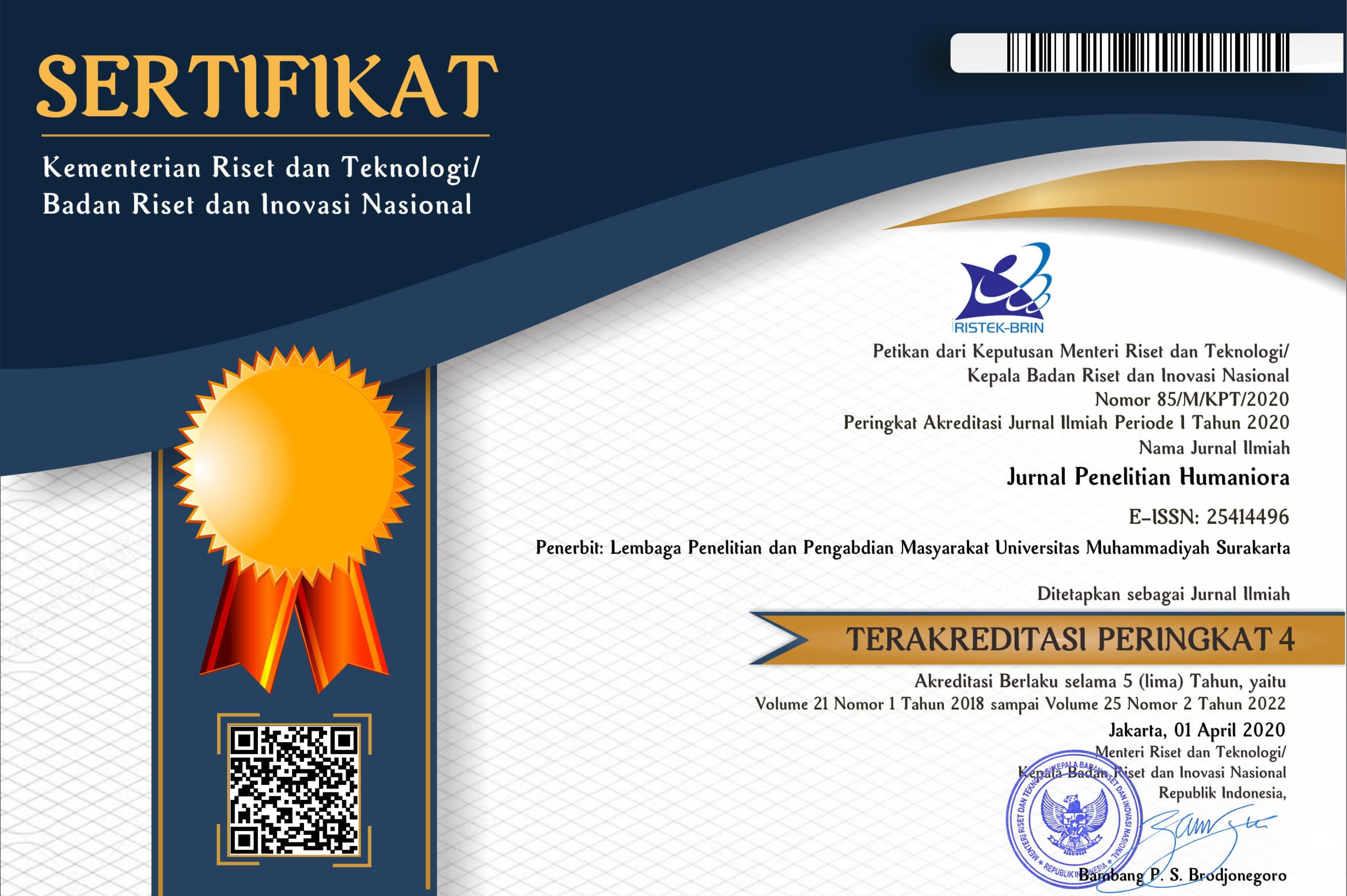INTERLINGUAL AND INTRALINGUAL ERRORS IN WRITING NARRATIVE TEXT MADE BY JUNIOR HIGH SCHOOL AND SENIOR HIGH SCHOOL STUDENTS
Andini Puji Pratiwi(1*)(1) Akademi Kesehatan Dinas Provinsi Riau Pematang Reba Rengat Riau
(*) Corresponding Author
Abstract
The present study investigates the interference of L1 (Indonesian) into L2 (English) and the errors that occur due to the influence of TL (target language). The focus of the study is on the errors committed by these EFL learners in writing narrative text and emphasized on interlingual and intralingual errors. The objectives of the study are to investigate the errors committed by these EFL learners in order to find out; (1) the types of interlingual and intralingual errors in Junior High School and Senior High School, (2) frequencies of interlingual and intralingual errors in Junior High School and Senior High School, and (3) similarities and differences of interlingual and intralingual errors in Junior High School and Senior High School. To achieve these objectives, writing test was utilized in this study. The subjects of the study comprised 35 of ninth graders and 35 tenth graders in Pekanbaru, Riau. The findings of the study suggest: (1) The types of interlingual and intralingual errors made by Junior High school and Senior High School divided into 2 levels, they are morphological level and syntactical level; (2) the frequency of interlingual errors in Junior High School 27,82% and 14,04% in Senior High School. The frequency of intralingual errors in Junior High School 72,17% and 85,96% in Senior High School; and (3) The similarities of interlingual and intralingual errors found in Junior High School and Senior High School are 2 types in morphological level and 2 types in syntactical level. The differences of interlingual and intralingual errors found in Junior High School and Senior High School are 1 type in morphological level and 11 types in syntactical level.
Keywords
Full Text:
PDFReferences
Abisamra, N. 2003. “An Analysis of Errors in Arabic Speakers’ English Writings.” As retrieved From http://abisamra03.tripod.com/nada/languageacq-erroranalysis.html
Al- Khresheh, M. H. 2010. “Interlingual Interference in English Language Word Order Structure of Jordanian EFL Learners”. Proceedings of the Europen Journal of Social Sciences-Volume 16, Number 1
Brown, H, Douglass. 1980. Principles of Language Learning and Teaching, New Jersey: Prentice Hall Inc.
. 2000. Principles of Language Learning and Teaching: Fourth edition. Cambridge: Cambridge University Press.
Brudhiprabha, P. 1972. Error Analysis: a Psycholinguistic Study of Thai English Compositions. Thesis (M.A.): McGill University
Candling, R. B. 2001. Vocabulary and Language Teaching. New York: Longman Inc.
Caswell, Roger. & Mahler, Brenda. 2004. Strategies for Teaching Writing. United States of America: ASCD (Association for Supervision and Curriculum Development)
Chelli, Saliha. 2013. “Interlingual and Intralingual Errors in the Use of Preposition and Articles”. As retrieved http://dspace.univ-biskra.dz:8080/jspui/bitstream/123456789/3571/1/Interlingual%20or%20Intralingal%20Errors%20in%20the%20Use%20of%20 Preposition.pdf
Chomsky, Noam. 1998. Minimalist Inquiries: the Framework. MIT OPL 15. Dept. of Linguistics, MIT.
Corder, S. P. 1974. Error Analysis. In J. P. B. Allen and S. Pit Corder (eds.) Techniques inApplied Linguistics 3. London: Oxford University Press.
. 1981. Error and an Interlanguage. London: Oxford University Press.
. 2000. Error Analysis. London: Longman Publisher.
Ellis, R. 1997. Second language acquisition. Oxford: Oxford University Press.
George, H.V. 1972. Common Errors in Language Learning. Rowley: Massachusetts.
James, Carl. 1998. Error in Language Learning and use. London: Longman.
Lado, R. 1964. Language Teaching: A Scientific Approach in students’and its Implications for the Classroom. Chapter 3 Cambridge: Cambridge University Press.
Richard, Jack, C. 1974. Error Analysis: Perspective on Second Language Acquisition. London: Longman Group Ltd.
. 1974. “A non-contrastive Approach to Error Analysis”. English Language Teaching Journal, 25, 204-229.
Touchie, Hanna. 1986. Second Language Learning Errors Their Types, Causes, and Treatment. Proceedings of the JALT Journal-Volume 8, Number 1
Weireech, S. 1991. How to Analyze Interlanguage. Journal of Psychology and Education. 9:113-22.
Wicaksono, Agung. 2014. “Sources of Grammatical Error: A Case Study on Intralingual, Interlingual, Context of Learning and Communication Strategies Factors.” Proceedings of the Nusantara of Research-Volume 1, Number 2
Article Metrics
Abstract view(s): 1246 time(s)PDF: 1324 time(s)
Refbacks
- There are currently no refbacks.











